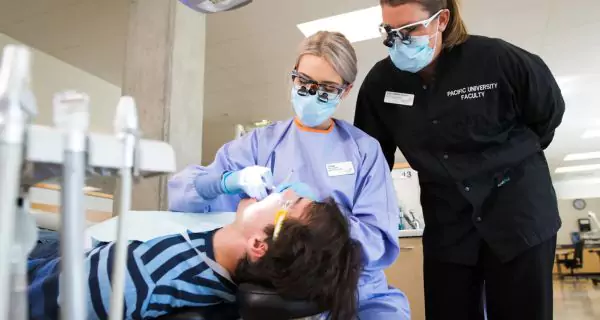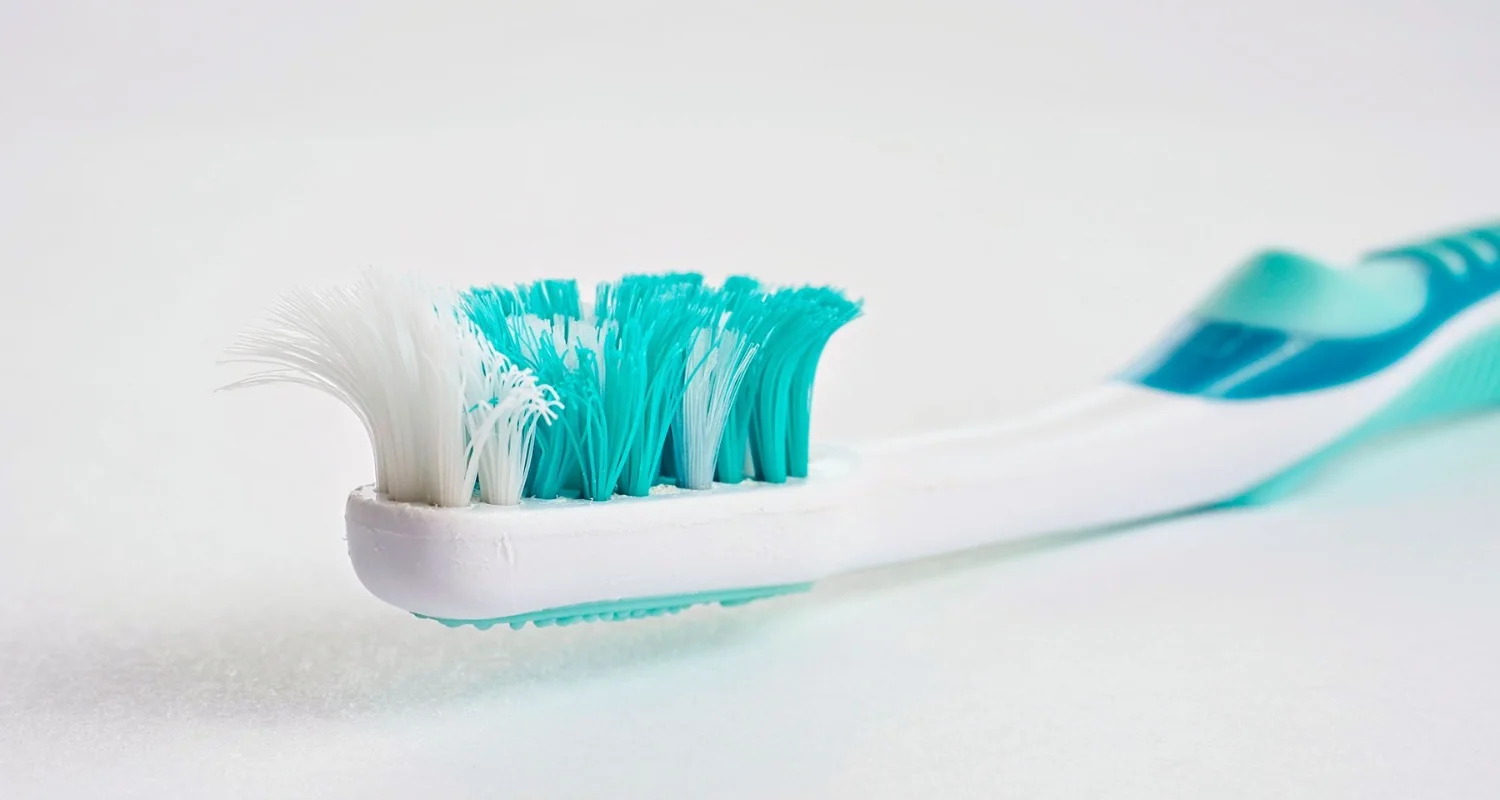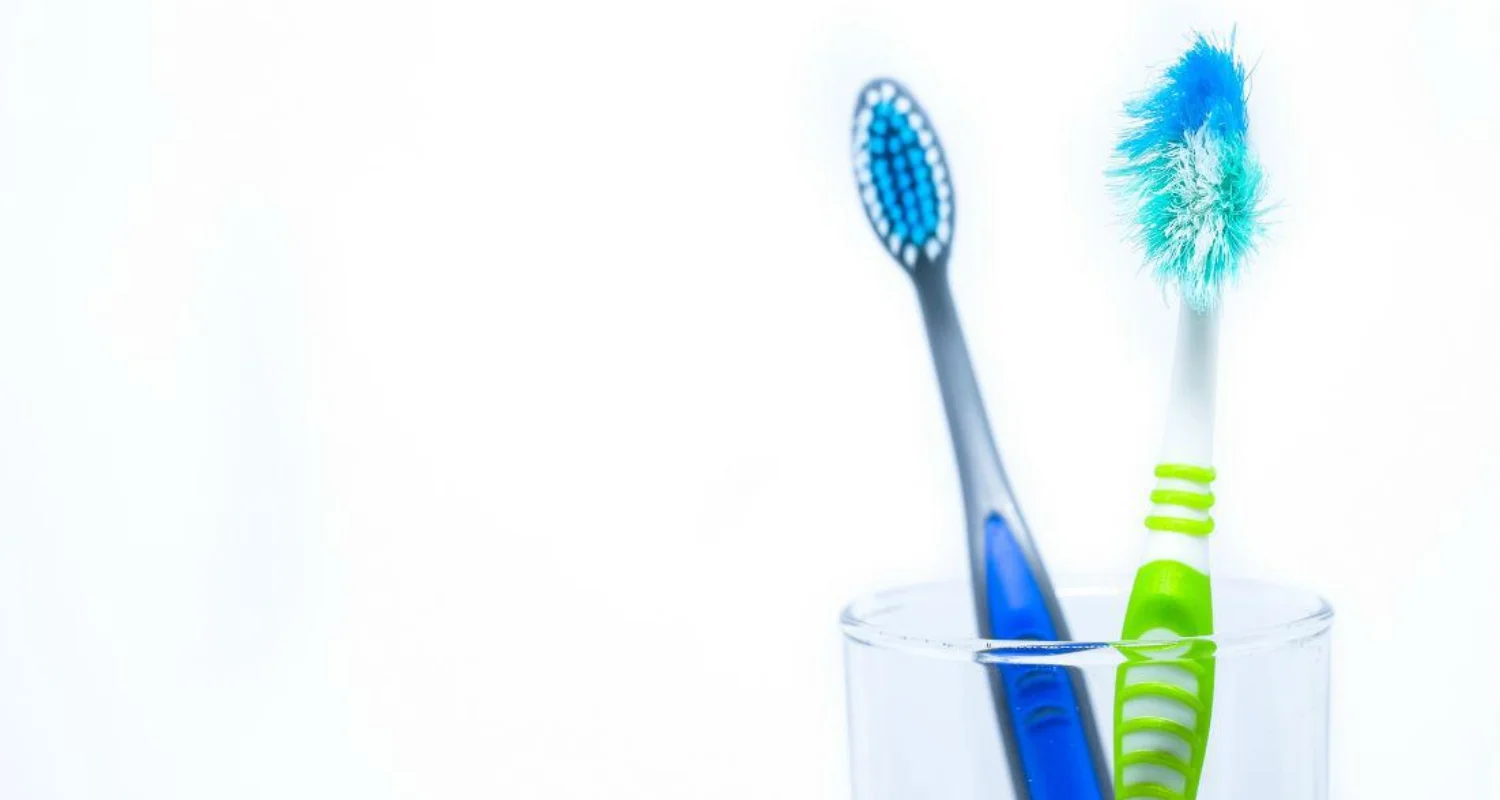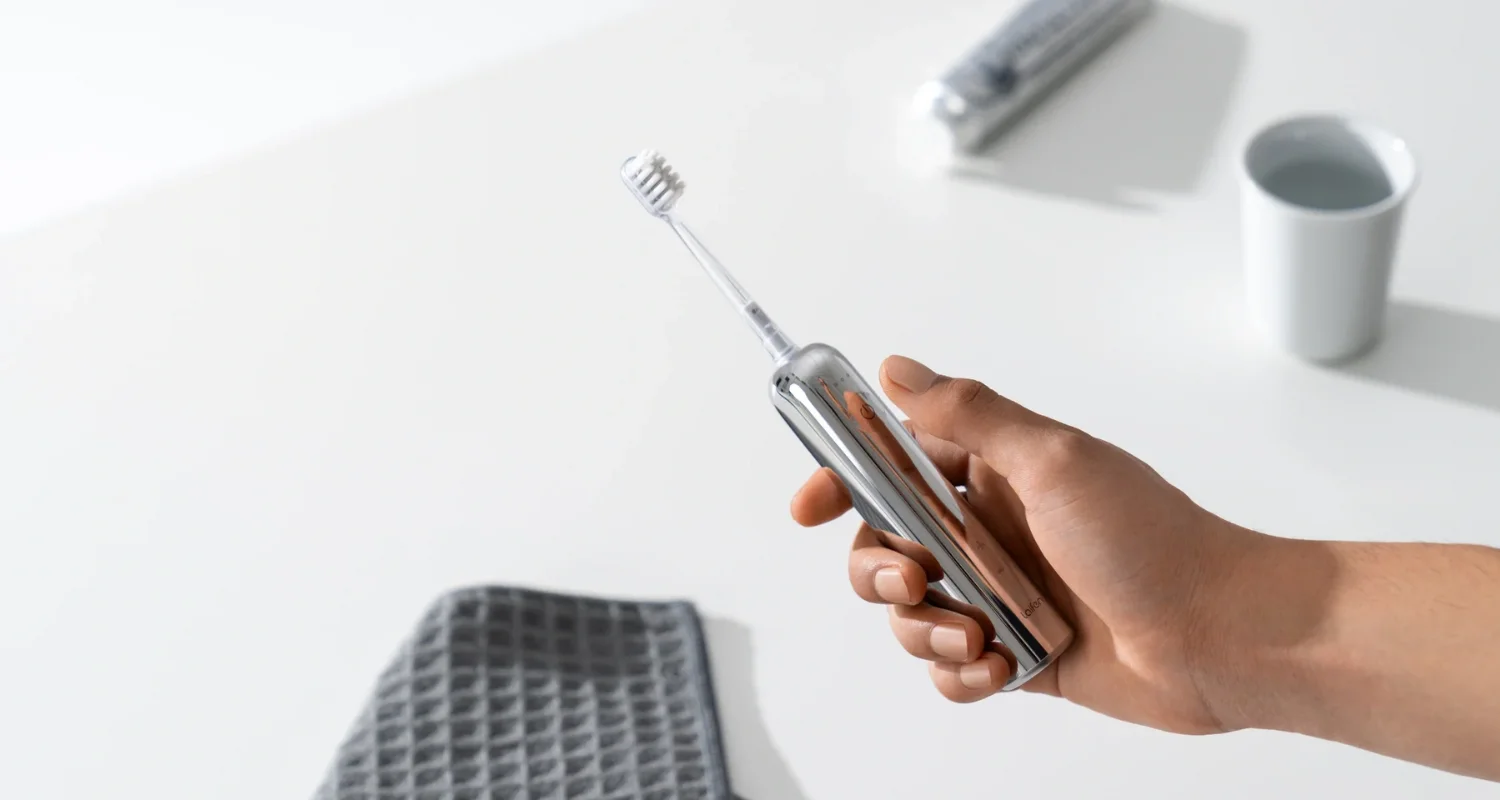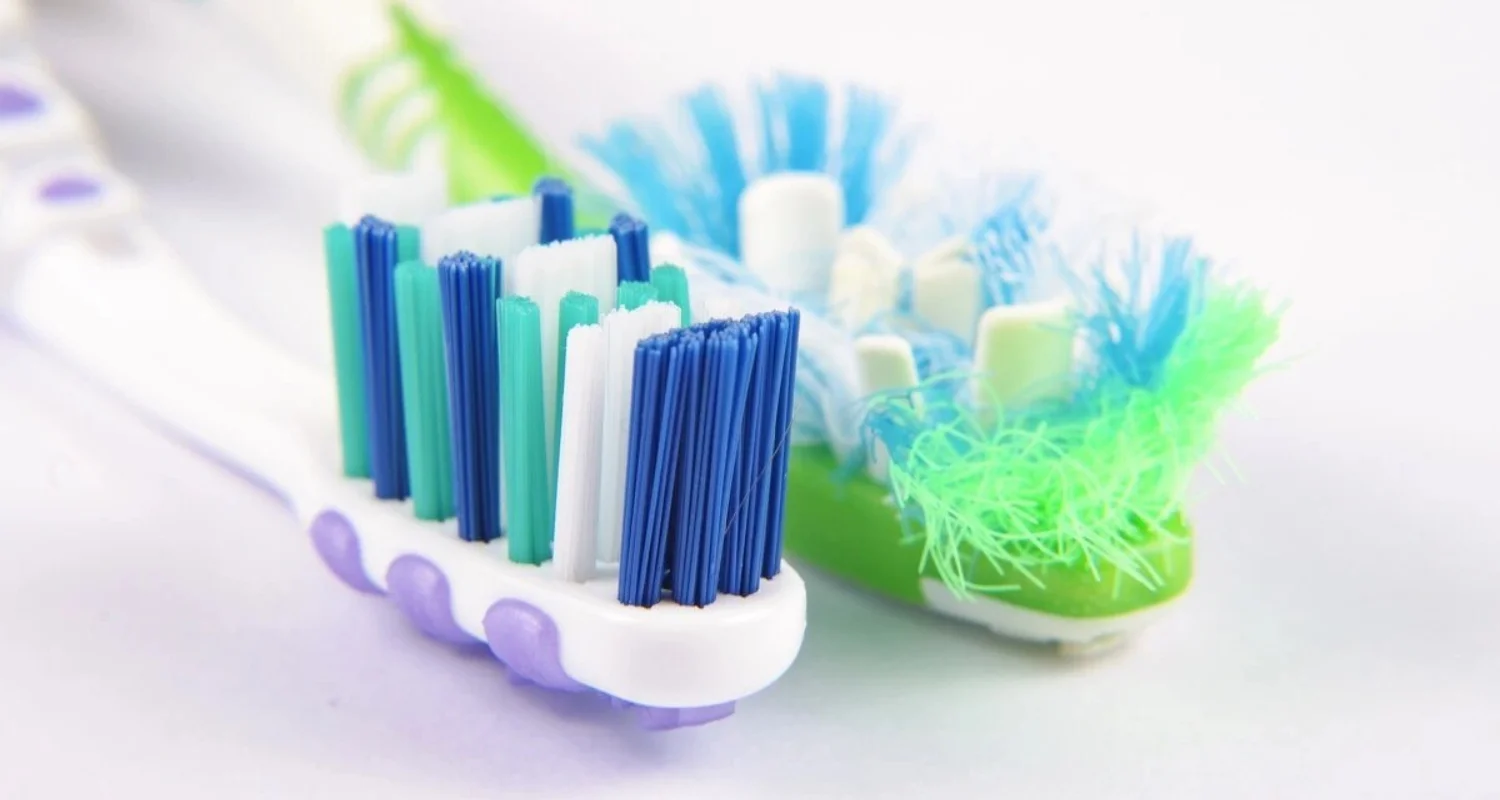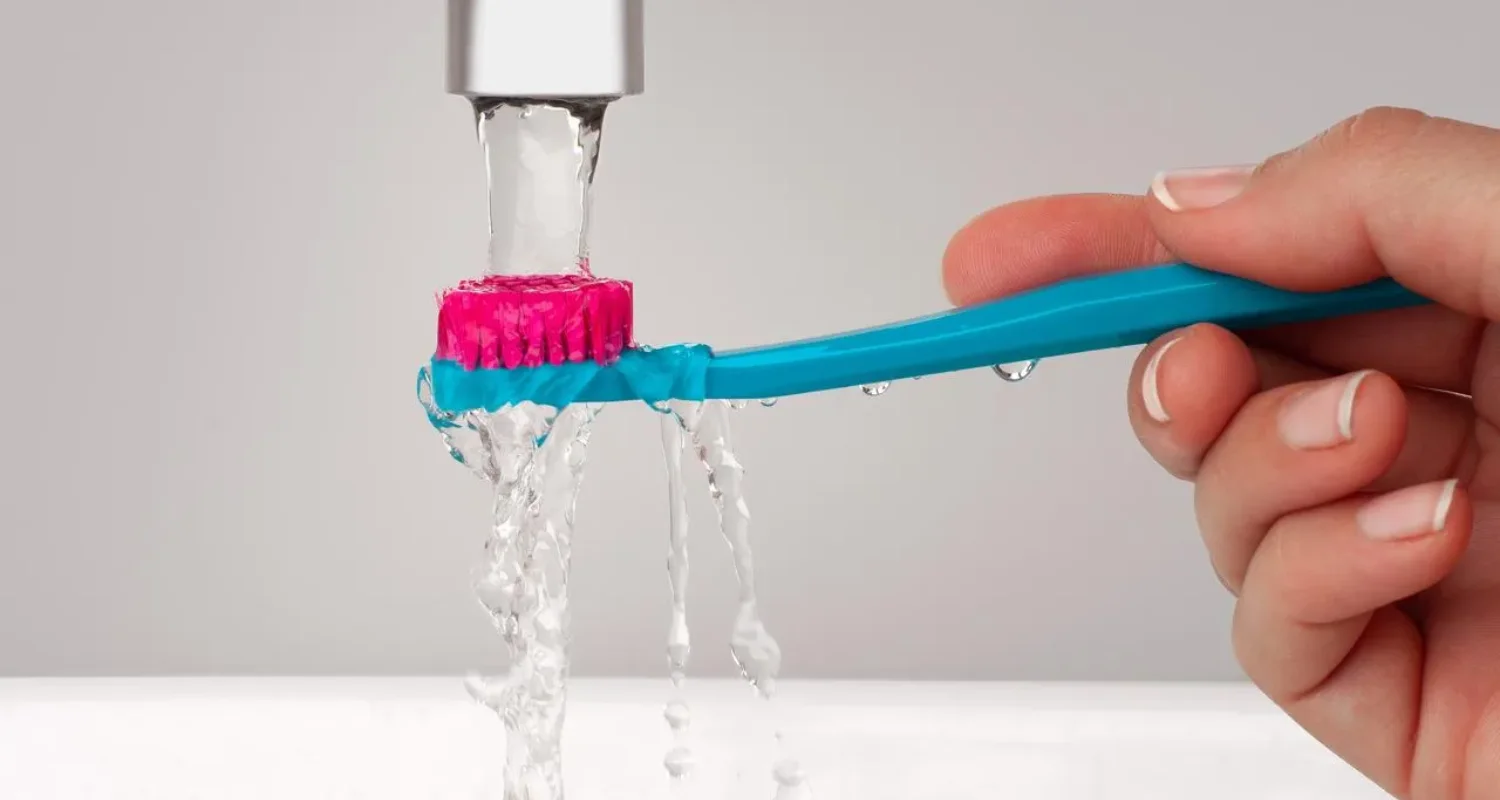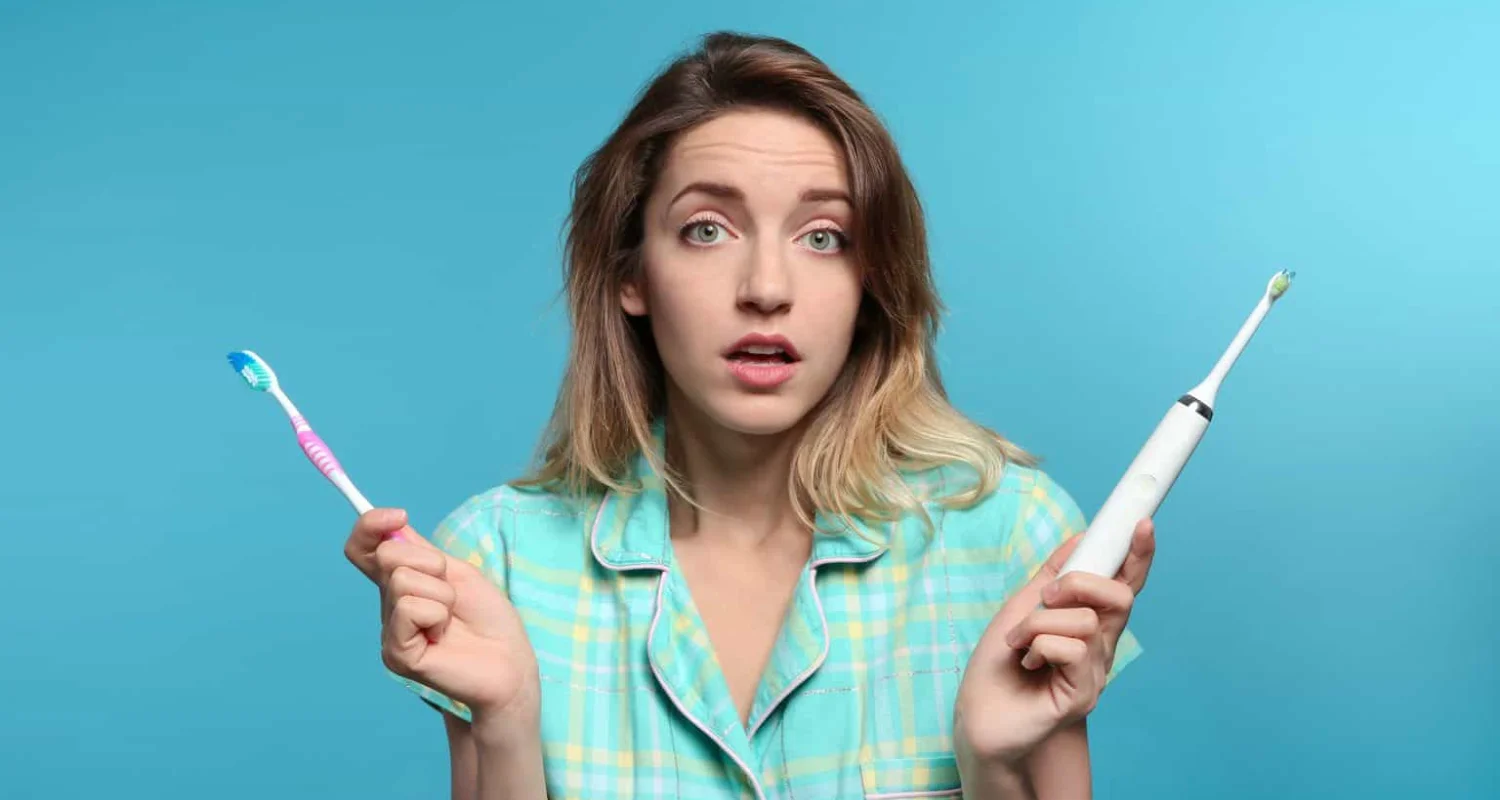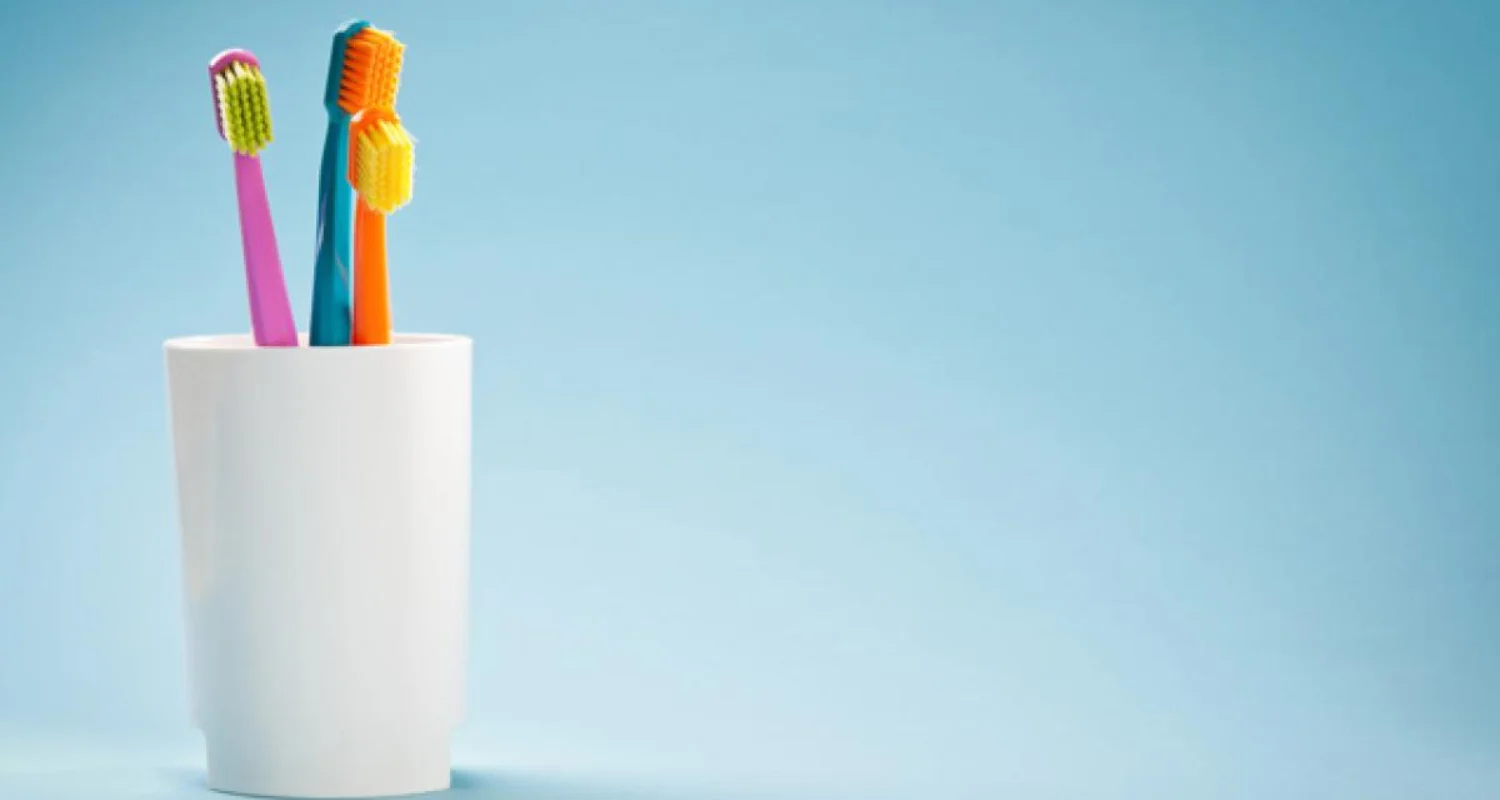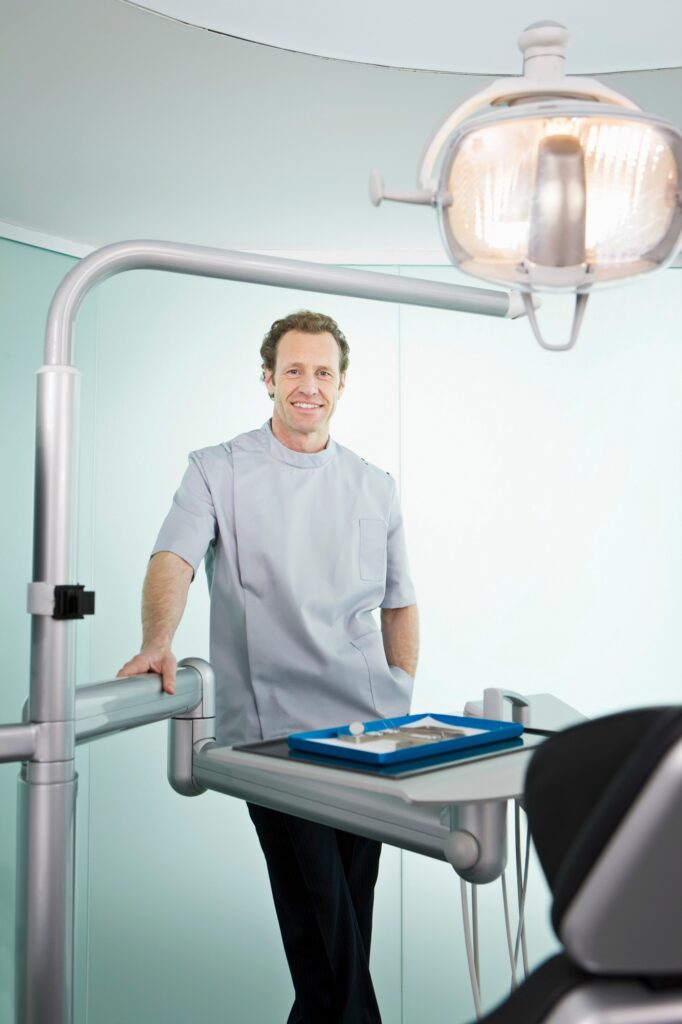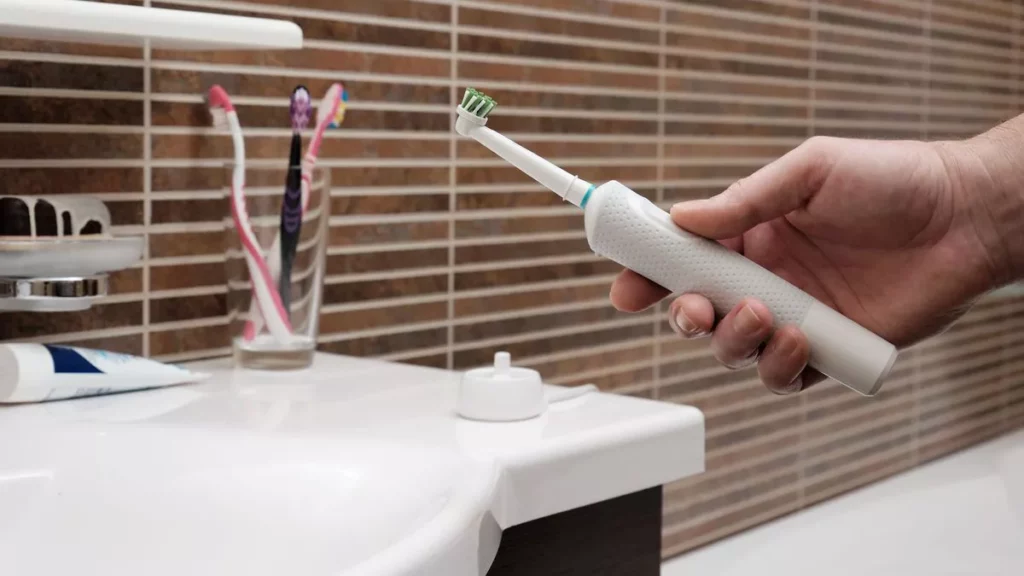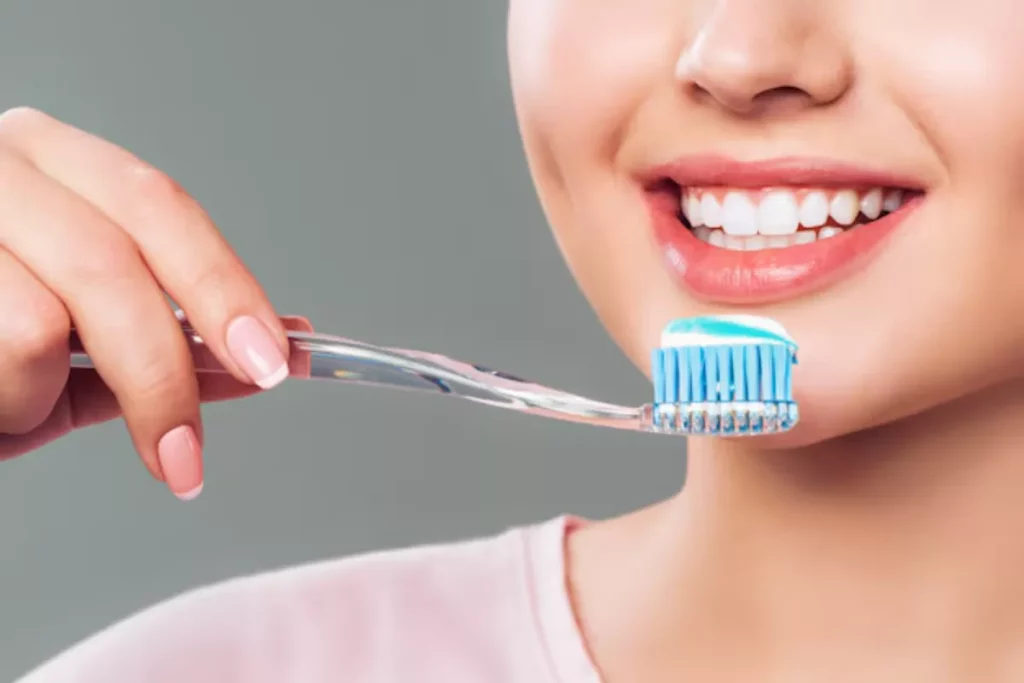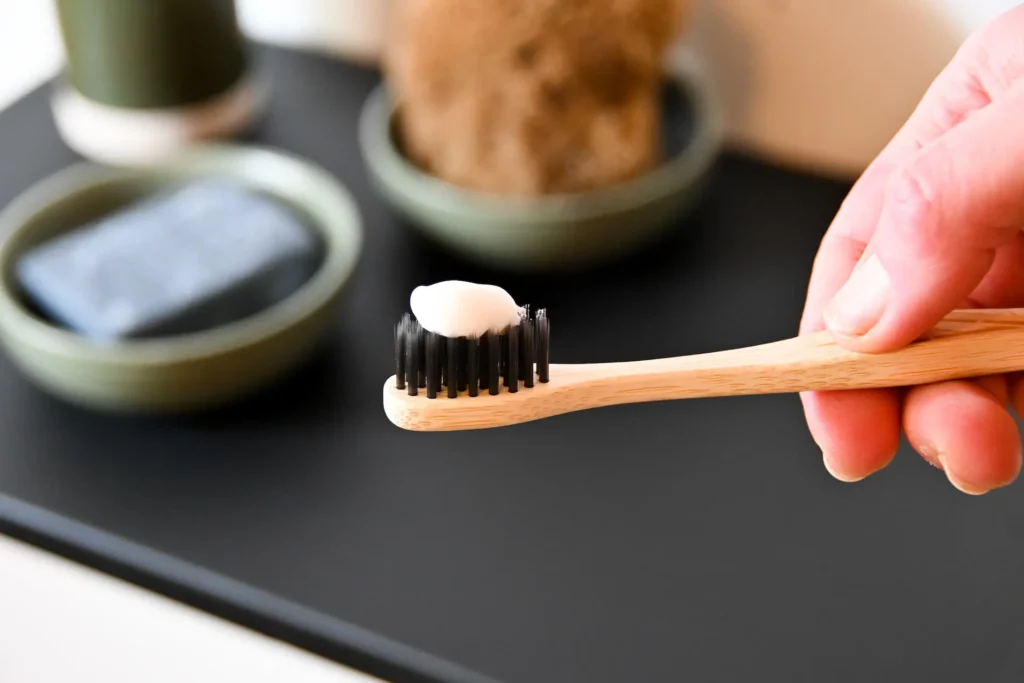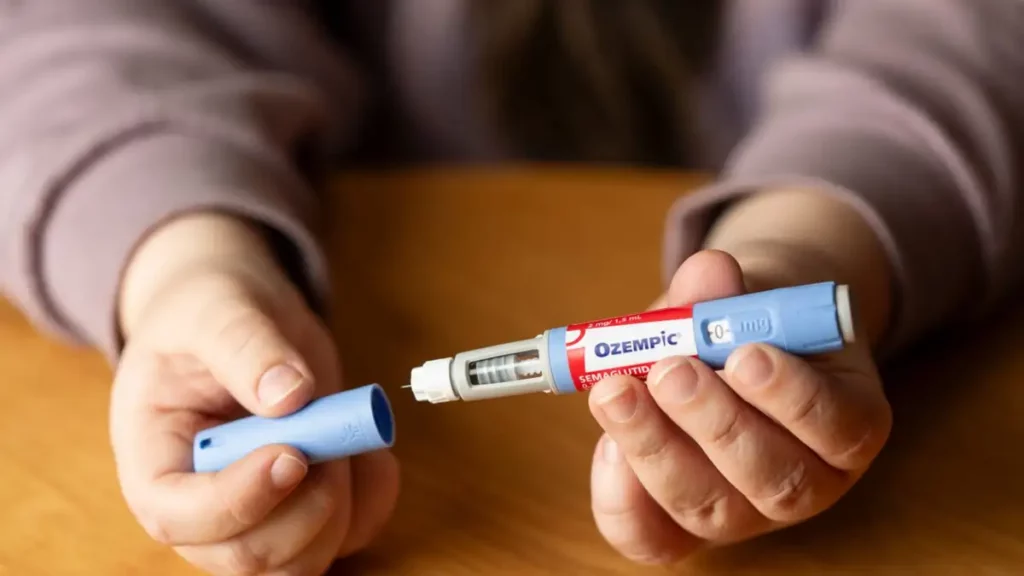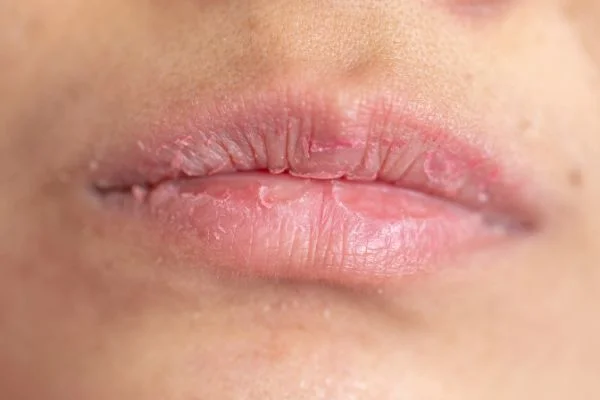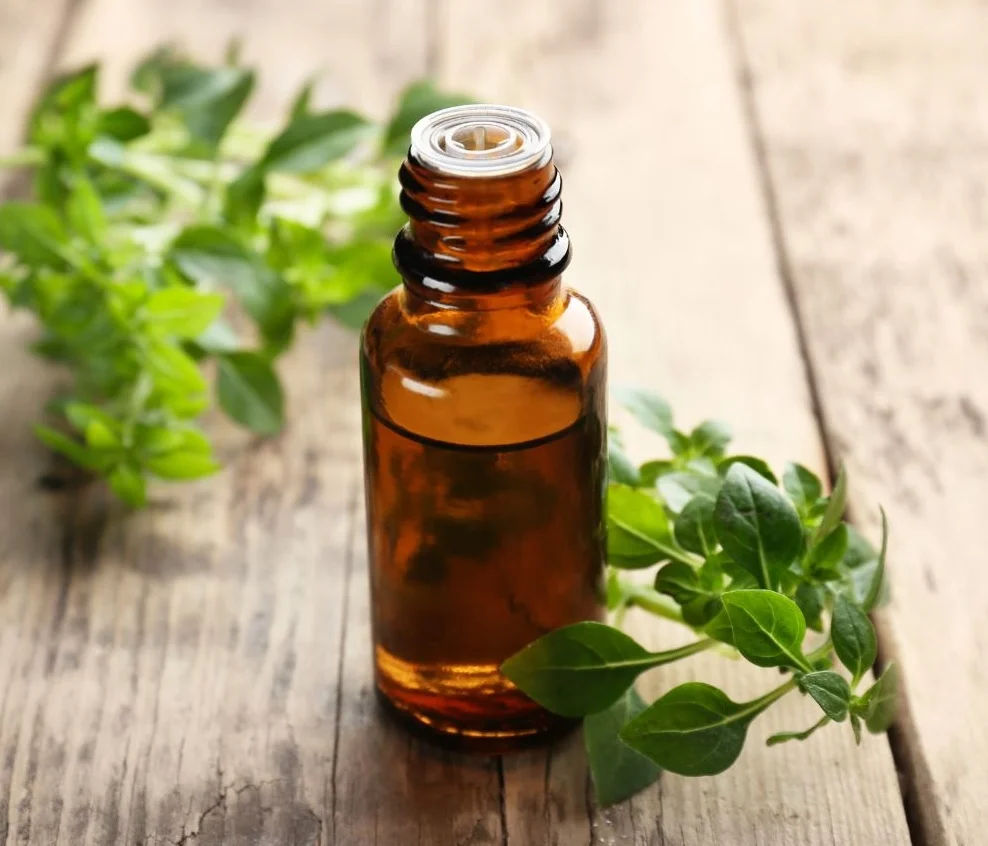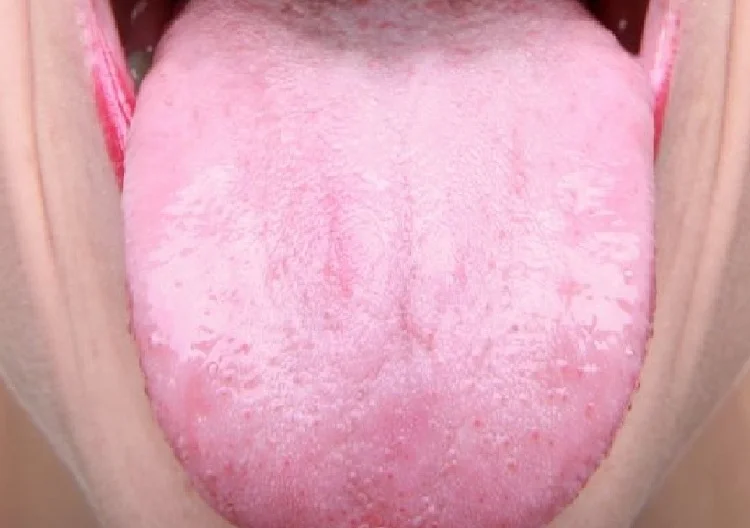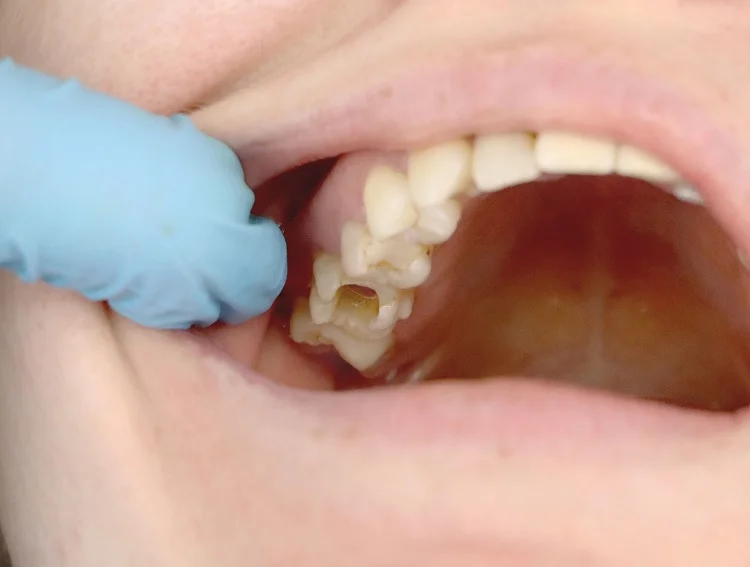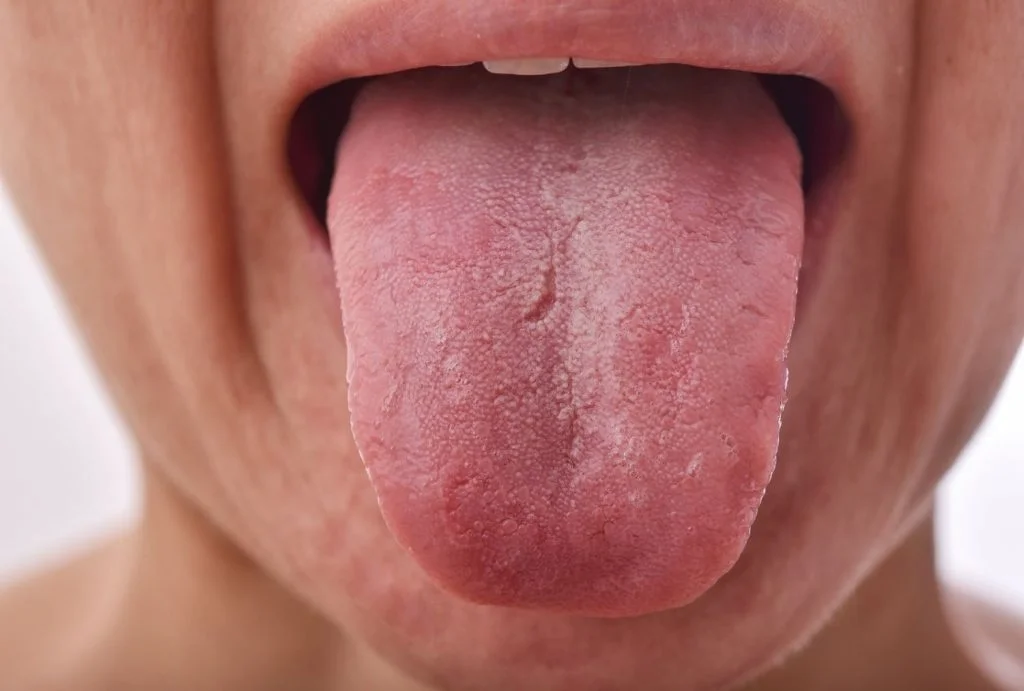Last Updated on: 19th September 2025, 12:32 pm
If you have in mind the question: ‘how often should I change my toothbrush?’, you came to the right place.
When was the last time you changed your toothbrush? It might seem like a small issue, but keeping it in good shape is essential for a healthy smile. Over time, the bristles wear down, collect bacteria, and lose their effectiveness– meaning your teeth aren’t getting as clean as they should.
Your toothbrush isn’t just another bathroom accessory; it’s a crucial tool for maintaining good oral hygiene. But here’s something surprising: using an old, frayed toothbrush can be almost as bad as not brushing at all! In this article, we’ll explain when and why you should replace your toothbrush to keep your smile fresh and healthy.
How often should I change my toothbrush?
Your toothbrush works hard to keep your teeth clean, but have you ever wondered if it’s doing its job properly? The American Dental Association (ADA) recommends changing your toothbrush every 3 to 4 months. Don’t just rely on the calendar; your toothbrush will give you signs when it’s time to replace it.
Think of your toothbrush as a dish sponge. Would you scrub your plates with a dirty, worn-out sponge? Probably not. The same goes for your teeth. An old toothbrush isn’t just less effective, but it can actually be harmful to your oral health by spreading bacteria and failing to remove plaque properly.
Signs your toothbrush needs to go
● Frayed or bent bristles: If the bristles look messy, bent, or spread out, they won’t clean your teeth effectively. In fact, they can even irritate your gums.
● Bad smell or mold: If your toothbrush smells weird or has black spots (yes, that’s mold!), toss it immediately. You don’t want those bacteria in your mouth!
● Leftover residue: Still seeing toothpaste or food stuck in the bristles after rinsing? It’s a clear sign it’s time for a new one.
● You’ve been sick: If you’ve had a cold, flu, or any oral infection, switch your toothbrush right away to avoid reintroducing germs.
● Gums bleeding more than usual: If your gums suddenly bleed more when brushing, it could mean your toothbrush is worn out and irritating your gums instead of cleaning them.
● Color-changing bristles: Some toothbrushes have special bristles that fade over time to let you know when they need to be replaced. If the color is gone, so is the toothbrush’s effectiveness. Here is our recommendation for you.
So, ‘how often should I change my toothbrush?’ While replacing your toothbrush every 3 to 4 months is a good rule of thumb, studies show that your brushing technique affects bristle wear more than time itself. If you brush too hard, your toothbrush may wear out faster, meaning you’ll need to replace it even sooner.
Your toothbrush is your first line of defense against cavities, gum disease, and bad breath. Keeping it fresh is a simple habit that makes a big difference in your oral health!
Manual vs. electric toothbrush
Does it matter whether you use a manual or an electric toothbrush when it comes to replacement? Not really! What matters most is keeping it in good shape so it can do its job properly. There are some key differences in how long each type lasts and why.
● Manual toothbrushes: the classic choice: The general rule? Replace it every 3 to 4 months. But if you tend to brush aggressively or multiple times a day, your bristles might wear out much sooner.
How to tell it’s time for a new one? If the bristles are bent, frayed, or sticking out in different directions, it’s no longer cleaning effectively. Even if it hasn’t been three months, swap it out!
● Electric toothbrushes: do they last longer? Some people assume electric toothbrush heads last longer—but they actually don’t. The fast, constant motion wears out the bristles just as quickly, if not faster.
Most electric brush heads also need replacing every 3 months. Many even have color-changing bristles that fade over time, letting you know when it’s time for a switch. If the bristles look worn before then, don’t wait! Take a look at this recommendation for you.
Both manual and electric toothbrushes have similar lifespans, but electric brush heads may wear out quicker due to their high-speed movement. Ultimately, the best choice comes down to personal preference.
A toothbrush with worn-out bristles won’t clean your teeth properly—no matter how fancy it is. Keep an eye on the bristles and don’t wait until your toothbrush looks like an old, scraggly broom to replace it!
What happens if you don’t change your toothbrush?
Think your toothbrush is still doing its job just because it looks okay? Think again! Using a worn-out toothbrush isn’t just ineffective—it can actually harm your teeth and gums. Here’s why:
Bacteria build-up
Your toothbrush is constantly exposed to bacteria, food particles, and saliva; which means, over time, it can become a breeding ground for germs. This can lead to:
● Bad breath: If your toothbrush can’t properly remove plaque and debris, you might notice an unpleasant odor lingering in your mouth.
● Oral infections: Bacteria trapped in old, frayed bristles can increase your risk of mouth sores, gum infections, or even abscesses.
It stops cleaning properly
A toothbrush with bent, worn, or frayed bristles won’t clean your teeth effectively. Instead of scrubbing away plaque, it just spreads bacteria around, which can cause:
● Cavities: If plaque isn’t removed properly, bacteria have more time to attack your enamel, leading to decay.
● Tartar buildup: Plaque that isn’t brushed away hardens into tartar, which can’t be removed with regular brushing and can lead to gum disease.
It can actually harm your teeth and gums
Using an old toothbrush isn’t just less effective; it can actively damage your oral health:
● Gum irritation and recession: Worn bristles don’t just clean poorly; they can also irritate your gums, causing inflammation, bleeding, and even gum recession over time.
● Mold and fungus: In humid environments, bristles can develop mold, which is the last thing you want in your mouth.
● Tooth sensitivity and enamel damage: Frayed bristles don’t clean as they should, allowing bacteria to weaken your enamel, leading to increased sensitivity and potential damage.
It can make you sick again
Just recovered from a cold or flu? Don’t hold onto your toothbrush! Bacteria and viruses can linger in the bristles, putting you at risk of reinfection.
How to clean a toothbrush properly
Your toothbrush is your first line of defense against cavities and gum disease, but if it’s dirty or poorly stored, it can do more harm than good. Here’s how to keep it in top shape:
● Rinse after each use: After brushing, rinse your toothbrush thoroughly under running water to remove toothpaste, food particles, and bacteria. Shake off any excess water to help it dry faster; a wet toothbrush is a bacteria magnet!
● Store it the right way: Keep it upright in an open, dry space; not in a closed case where moisture can trap bacteria. Or you can build your own toothbrush holder!
-If you use a cap, make sure it has ventilation holes to prevent mold growth.
-Keep it away from the toilet! Flushing can send bacteria into the air, so store your brush at a safe distance.
-Don’t let toothbrushes touch—cross-contamination is real!
● Don’t share your toothbrush: Even with family, sharing a toothbrush is a no-go. It can transfer bacteria and viruses like the cold, flu, or even hepatitis. Everyone should have their own!
● Disinfect it weekly: Want to go the extra mile? Try these simple ways to kill bacteria:
–Mouthwash soak: Let the bristles sit in antibacterial mouthwash for a minute, especially during cold and flu season.
–Hydrogen peroxide rinse: A quick soak in hydrogen peroxide helps eliminate germs.
–UV sterilizer: If you have one, it’s an easy way to zap bacteria. If you don’t have any, this is a great option.
Skip harsh disinfectants or alcohol-based solutions, they can damage the bristles and make brushing less effective.
● Wash your hands before and after brushing: Your hands touch everything; that includes your toothbrush. Washing them before and after brushing prevents germs from making their way into your mouth.
Taking care of your toothbrush is simple but essential. It’s not just about ‘how often should I change my toothbrush’. You have to keep it clean, dry, and fresh, and it’ll keep your smile looking its best!
What toothbrush should you choose?
Picking the right toothbrush can make a big difference in your oral health. With so many options out there, let’s break it down so you can find the best fit for your smile!
Manual vs. electric toothbrush: which one should you use?
● Manual toothbrush: Simple, affordable, and easy to carry anywhere. If you have a good brushing technique, it can be just as effective as an electric version. However, it requires more effort and poor technique can leave plaque behind. That’s why we recommend the Bass brushing technique.
● Electric toothbrush: Perfect for those who want an easier, more thorough clean or struggle with precise brushing (like people with limited mobility). The oscillating and rotating bristles remove plaque efficiently and work great for braces. The downside? They cost more, need charging, and require new brush heads every three months.
Both work well if used correctly. If you’re confident in your technique, go manual. If you want less effort and more consistency, an electric toothbrush might be worth the investment.
Soft, medium, or hard bristles?
The type of bristles matters more than you think, it can impact your enamel, gums, and even sensitivity.
● Soft bristles: Dentist-approved and the best choice for most people. They’re gentle on gums, great for sensitive teeth, and ideal for kids or people with gum disease.
● Medium bristles: Provide a stronger clean, but be careful! If you brush too hard, they can wear down enamel and irritate your gums.
● Hard bristles: While they might seem like they’d clean better, they can damage enamel, cause gum recession, and increase sensitivity. Most dentists don’t recommend them.
No matter which toothbrush you choose, brushing too hard won’t make your teeth cleaner; it just causes damage. A gentle, consistent brushing routine is the real secret to a healthier mouth. If you’re unsure which brush is right for you, ask your dentist for guidance!
How to pick the perfect toothbrush
A good toothbrush does more than just scrub your teeth; it makes brushing easier, more comfortable, and more effective. Here’s what to look for:
● Right-sized brush head:
-Smaller, rounded heads help you reach tricky spots, like your back molars.
-For kids, a compact brush head makes brushing easier and more effective. Also, the electric toothbrush is a good option for kids.
● Smart bristle design:
-Different bristle lengths clean between teeth better.
-Tapered or curved bristles reach those hard-to-clean areas.
● Comfortable handle for better control:
-A non-slip, ergonomic grip makes brushing easier, especially when wet.
-A flexible handle helps adjust pressure, protecting your gums and enamel.
A fresh toothbrush is your best defense against cavities, gum disease, and plaque buildup. Dentists recommend changing it every 3 to 4 months, or sooner if the bristles look frayed or if you’ve recently been sick. After all, a worn-out toothbrush can’t be cleaned properly. And a dirty one? Even worse!
To keep your smile in top shape, brush after meals (or at least twice a day), floss daily, and use mouthwash for extra protection.
A simple swap can make a big difference in your oral health. Check your toothbrush today—if it’s looking rough, it’s time for a fresh start!
Frequently Asked Questions
Can I keep my toothbrush in a travel case when I’m not traveling?
It ‘s best not to. Travel cases are great for short-term use, but keeping your toothbrush covered for too long traps moisture, leading to bacteria growth. Always let it air dry between uses!
Is a child’s toothbrush different from an adult’s?
Yes! Children’s toothbrushes have smaller heads and softer bristles to protect their developing teeth and gums. Plus, fun colors and designs make brushing more enjoyable for kids!
Do expensive toothbrushes last longer than cheap ones?
Not necessarily! A toothbrush’s lifespan depends more on how you use and care for it rather than the price. As long as you replace it every 3-4 months, even a basic toothbrush works well.
Do I really need to floss if I brush my teeth well?
Yes! Brushing only cleans about 60% of your teeth. Flossing removes plaque and food debris between teeth, where a toothbrush can’t reach.
Can I use my toothbrush to clean my retainer or dentures?
It’s better to use a separate soft-bristled brush designed for dentures or retainers. Regular toothbrushes can be too harsh, causing scratches that trap bacteria. Instead, clean them with lukewarm water and a gentle cleaner to keep them in good condition!
Share
References
1. ADA. (2022). Toothbrushes. American Dental Association. https://www.ada.org/resources/ada-library/oral-health-topics/toothbrushes
2. Madormo, C. (2023, 27 September). Realistically, how often should you change your toothbrush? Verywell Health. https://www.verywellhealth.com/how-often-should-you-change-your-toothbrush-7968548
3. Muller, B. M., Repetto, A., Velly, A. M. (2012). A graphic tool to help consumers determine when to replace a toothbrush: a cohort study. International Dental Journal, Volume 62, Issue 3, Pages 154-160, ISSN 0020-6539. https://doi.org/10.1111/j.1875-595X.2011.00110.x
4. Van Leeuwen, M. P. C., Van der Weijden, F. A., Slot, D. E., & Rosema, M. A. M. (2019). Toothbrush wear in relation to toothbrushing effectiveness. International journal of dental hygiene, 17(1), 77–84. https://doi.org/10.1111/idh.12370
5. Watson, K. (2019, 21 November). How Long Does a Toothbrush Last and When Should I Replace It? Healthline. https://www.healthline.com/health/how-often-should-you-change-your-toothbrush
6. Watson, K. (2020, 25 June). How to Disinfect Your Toothbrush and Keep It Clean. Healthline. https://www.healthline.com/health/dental-and-oral-health/how-to-clean-toothbrush
-
Dr. Yeidy Carolina Mesa [Author]
DDS Yeidy Carolina Mesa Passionate Dentist | Advocate for Accessible Oral Health Education Graduating from Universidad CES in 2022, I am a dedicated general dentist with a lifelong passion for helping others and making a meaningful impact in the world. My journey into dentistry began at the age of 7, inspired by my own experience with braces and overcoming a fear of the dentist. This personal journey shaped my mission to help patients conquer their own dental anxieties and embrace a healthier,...
View all posts
-
Nayibe Cubillos M. [Medical Reviewer]
Pharmaceutical Chemestry |Pharmaceutical Process Management | Pharmaceutical Care | Pharmaceutical Services Audit | Pharmaceutical Services Process Consulting | Content Project Manager | SEO Knowledge | Content Writer | Leadership | Scrum Master
View all posts
A healthcare writer with a solid background in pharmaceutical chemistry and a thorough understanding of Colombian regulatory processes and comprehensive sector management, she has significant experience coordinating and leading multidisciplina...

